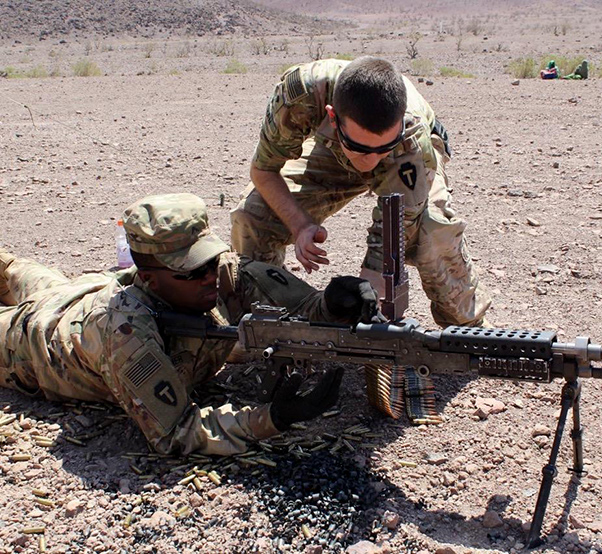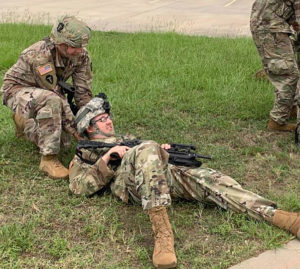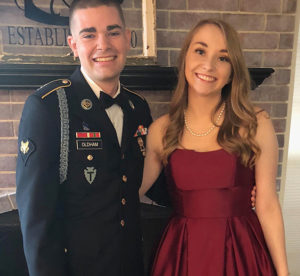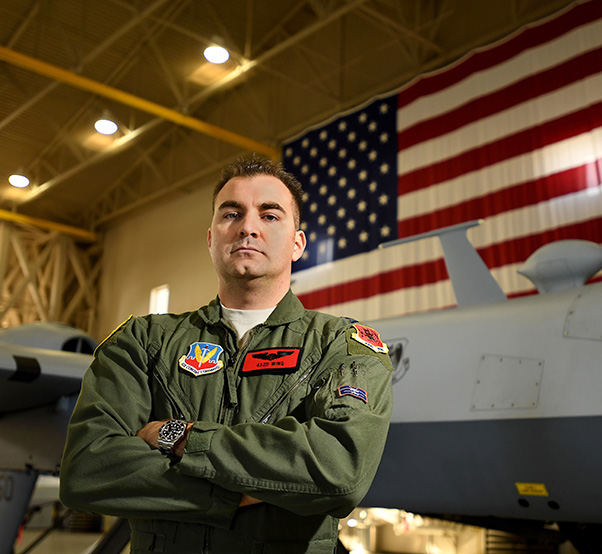
When Matt Oldham saw the black SUV erupt in flames, he sprinted toward the fire.
The Army specialist’s heart raced as he approached the injured driver, whose vehicle had collided into the brick building across the street from the Dallas Holocaust Museum, where he worked as a security guard.
It had started as an ordinary, quiet summer night in downtown Dallas July 24.
Oldham, a member of the Texas National Guard, had volunteered for the nightshift because of graffiti recently strewn upon the museum’s new building.
The blaring crash broke the silence.
The accident occurred at about 12:40 a.m., with an ensuing fire trapping the driver inside.
“I heard the tires screech,” Oldham said. “It was a very large crash.”
Oldham peered through the windows on the west side of the museum to assess the situation before he instinctively began running toward the wreckage.

“My whole family has served all the way back through World War I,” Oldham said. “So it’s always kind of been in my nature to serve and to … run toward fire — literally. It was kind of like muscle memory or instinct; whatever you want to call it. I knew I had the training, the equipment to help. I couldn’t not act.”
Two Dallas police officers hunkered over the vehicle, desperately attempting to free the injured driver from the vehicle with no luck. The entire front end of the black SUV lay crunched against broken glass and brick. The impact sandwiched the driver between the building and car.
Carrying a tourniquet, the Wylie, Texas, native acted quickly. He credited the combat buddy care and lifesaver training he received at Fort Benning, Ga., with helping him perform the successful rescue.
As the flames rose around him and the heat began to flicker on his skin, the 22 year old said he remained focused on extracting the trapped man from the vehicle.
“I definitely didn’t realize the magnitude of the fire,” Oldham said. “Or destruction of the vehicle from the driver’s side because you couldn’t really see it as much. You just kind of block all that out; you focus on your tasks.”
Oldham saw the injured man crunched inside the steering column of the vehicle. He scanned the man’s body for injuries and learned the man had suffered a compound fracture, broken bones in both arms and a partially-amputated right foot. He also had a partially-crushed chest, though his airway remained intact, Oldham said.

The man remained conscious, though heavy intoxication and shock prevented him from communicating. Oldham said the injured man is expected to survive, though he will likely be taken into custody for driving under the influence.
Oldham said the collision gave him his first opportunity to exercise his combat lifesaving skills that he could use in a future deployment. Oldham deployed from 2017-2018 to the Horn of Africa with his National Guard unit: C Company, 3rd Battalion, 144th Infantry Regiment from nearby Seagoville, Texas.
While in Africa, he participated in airbase defense, patrols and general theater security. But he didn’t encounter anything during the nine-month deployment like he did July 24 in Dallas.
“You try to kind of block it out because it is traumatic,” he said. “Especially if you’ve really never seen things like that. I’ve seen plenty of pictures in training … it’s different when you see it in person. And being an infantryman, it’s very similar to a combat injury.”







